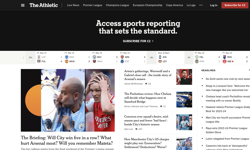Despite the predictions of doom-mongers, at every point of media evolution, newspapers have continued to respond – eventually – to each new challenge, while having navigated the roller coaster of the economic cycles. I might say that of the last 30 years, which have been my experience, but in truth the reflective ups and downs have been going on since the last “Great Crash”.
I wrote a while back that we were likely to see a “double dip” in the economy, and it looks like a second slide is upon us. So we need to be prepared, but we also need to recognise that what newspaper companies are bad at is preparing for recovery and the actions during down times that inhibit recovery and renewal. So newspapers will survive the double dip, but will not necessarily be best positioned to exploit the inevitable recovery in the media economy that will emerge. Decisions now, addressing economic uncertainty, with the inevitable further cuts, will not necessarily address the market opportunities of three years’ time.
Daily to weekly may be one way of addressing both the short and long term positions.
When I read the Newspaper Association of America’s report on daily to weekly (last year), I confess to being dubious, but it got me thinking. My emotional attachment to the daily newspaper concept has been dramatically altered by work on a couple of projects, specifically looking at this issue for clients, where I have focused on the economic and industry realities.
The first reality is that, even in subscription markets, print readers’ frequency of reading and purchase is declining. In fact, reading frequency is a far greater source of circulation decline than brand attachment and loyalty.
A second issue relating to frequency is that advertisers do not advertise every day. Display advertisers appear once, or sometimes twice a week. Classified advertising, which has been declining dramatically for the last few years, tends to be focused in ghettos, with platforms on different days for auto, real estate, jobs, entertainment etc.
A third and increasingly compelling issue is that a daily newspaper does not necessarily attract a larger monthly user base to its website. Indeed I have plenty of examples where the local weekly audience is not only as strong relative to circulation, but it is also more loyal in terms of repeat visits.
So how does all this translate in terms of customer behaviour? Newspapers’ economics vary greatly from country to country. But the following assumptions are reasonable:
In single copy markets, the circulation figure, of say 30,000 copies typically reflects a buying group of 60,000 people buying three times a week. So it is reasonable to assume that if a paper converts to weekly sale then circulation on that day will rise. In Eastern Europe, in many countries, daily newspapers already have one day when circulation is many times higher than on other days.
The same is true of advertising. Most advertisers only advertise once a week. And much of newspaper revenues remain in specific platforms – auto, jobs, real estate – which feature in weekly supplements. So it is reasonable to assume that a high proportion – at least 70% in my experience - of the revenue that is spread across the week can be funnelled into the weekly offering.
Such repackaging will result in a far larger advertising volume, justifying a higher editorial content, a better product, with more reading life, and possibly a higher cover price.
Of course the newspaper needs to maintain, or even expand its online content, and focus on continuing to offer a strong lively daily offering. So one cannot assume dramatic reductions in editorial costs. Similarly, the reduction in production times does not negate all operating and capital costs of printing.
We can argue all we want about the dynamics of the move and of course costs vary from one newspaper to another as will the reaction of the market. But my model suggests that assuming editorial and overhead costs are halved and those in advertising are cut by 40%, and most other things are pro-rata to revenue, then profit margins improve by 13%.
Digital revenues might actually benefit from more people visiting more intensely the website for the daily news service. Not much, but it’s a bonus.
I know these assumptions are vague. But they reflect the fact that all newspapers are different, reflecting their local situation, and also their ability to implement.
You can get your set of dentures into your figures, and no-doubt your accountants will get two sets into the same figures, but to me the argument while not good for everyone will be excellent for some, particularly those newspapers with a high proportion of ad revenue to circulation.
It’s only one option, but in these confusing times, everything is worth a good look.










